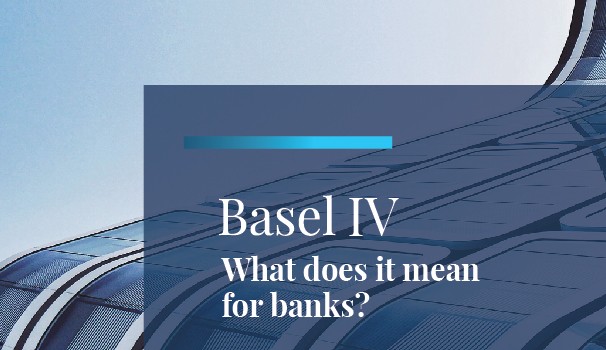



Ever expanding regulatory requirements require revisions in capital calculations needing core expertise in monitoring and impact assessment studies
Aptivaa, through its deliberations at international forums has been closely tracking the emergence of Basel IV and looking back, we see much of what we anticipated has come to pass. With the past experience of implementation of Basel accords and evolutionary vision into the Basel IV draft, Aptivaa clearly has industry edge in helping banks during the transition, as it can be predicted that one of the biggest challenges this change will bring is the increase in capital requirements and funding costs.





Mind maps are used to organize information depicting ideas, concepts or hierarchical relationships in a graphical way. Basel IV capital computation mind maps focus on laying out the process of computing capital requirements in a series of steps.
The capital computation approaches for Credit Risk, namely, Standardised Approach (SA) and Internal Ratings Based (IRB) Approach have been mind mapped along with the Credit Risk Mitigation (CRM) techniques, used to reduce or transfer credit risk. We have covered the following mind maps
The Standardised Approach mind map is prepared based on CRE 20 guidelines of the Basel Framework to be implemented by 1st January, 2023.
The mind map covers the RWA computation for various Basel asset types in a series of steps and provides references to requisite guidelines. The asset classes covered under the mind map include Sovereigns, PSEs, MDBs, Banks, Security Firms, Covered Bonds, Corporates, Retail Exposures, Real Estate Exposures, Subordinated debt, equity & other capital instruments, Defaulted Exposures and Other Assets.
While traversing from left to right, the mind map nodes can be expanded by clicking on the numbered boxes and collapsed clicking on the minimize button on the right hand side of the nodes. In case of decision boxes, a green colored path signifies the "Yes" option and red colored path signifies the "No" Option.
View Mind-map: Click Here to view
The Standardised Approach mind map is prepared based on CRE 22 guidelines of the Basel Framework to be implemented by 1st January, 2023.
The mind map covers the Credit Risk Mitigation approaches available for the Standardised Approach and provides references to requisite guidelines. The mind map lays out the On-balance sheet netting, Collateralised transactions (both Simple Approach and Comprehensive Approach) and Guarantees as CRM techniques and also proceeds to describe RWA computation under two scenarios - 1) where a bank has opted for Simple approach for collateralised transactions and 2) where a bank has opted for the Comprehensive Approach for collateralised transactions.
While traversing from left to right, the mind map nodes can be expanded by clicking on the numbered boxes and collapsed clicking on the minimize button on the right hand side of the nodes. In case of decision boxes, a green colored path signifies the "Yes" option and red colored path signifies the "No" Option.
View Mind-map: Click Here to view
The Internal Ratings Based (IRB) Approach mind map is prepared based on CRE 22, CRE 31, CRE 32 and CRE 35 guidelines of the Basel Framework to be implemented by 1st January, 2023.
The mind map covers the RWA computation for various Basel asset types in a series of steps and provides references to requisite guidelines. The asset classes covered under the mind map include Sovereigns, Banks and Corporates. The mind map lays out calculation of risk components - Probability of Default, Loss Given Default, Exposure at Default, Correlation, Maturity adjustment and Expected Loss Computation under both - 1) Foundation Approach 2) Advanced Approach and shows how different risk components are used to derive requisite RWA.
While traversing from left to right, the mind map nodes can be expanded by clicking on the numbered boxes and collapsed clicking on the minimise button on the right hand side of the nodes.
View Mind-map: Click Here to view
The Internal ratings Based Approach (IRB) mind map is prepared based on CRE 22, CRE 31, CRE 32 and CRE 35 guidelines of the Basel Framework to be implemented by 1st January, 2023.
The mind map covers the RWA computation for Retail asset types in a series of steps and provides references to requisite guidelines. It lays out calculation of different risk components -Probability of default, Loss Given Default, Exposure At Default, Correlation computation and Expected Loss computation and shows how different risk components are used to derive RWA.
While traversing from left to right, the mind map nodes can be expanded by clicking on the numbered boxes and collapsed clicking on the minimize button on the right hand side of the nodes.
View Mind-map: Click Here to view
The Internal rating Based Approach (IRB) mind map is prepared based on CRE 22, CRE 32 and CRE 36 guidelines of the Basel Framework to be implemented by 1st January, 2023.
The mind map covers the Credit Risk Mitigation approaches and provides references to requisite guidelines. The mind map lays out Collateral Recognition, On-balance sheet netting and Guarantees as CRM and proceeds to showcase Loss given Default computation.
While traversing from left to right, the mind map nodes can be expanded by clicking on the numbered boxes and collapsed clicking on the minimize button on the right hand side of the nodes. In case of decision boxes, a green colored path signifies the "Yes" option and red colored path signifies the "No" Option.
View Mind-map: Click Here to view

Operational risk is defined as the risk of loss resulting from inadequate or failed internal processes, people, and systems or from external events. This definition includes legal risk but excludes strategic and reputational risk. Read More

The Basel Committee on Banking Supervision (BCBS) is the primary global standard-setter for the prudential regulation of banks. BCBS introduced the first capital accord in 1988, which has since then been evolved into an integrated Basel Framework comprising of all the current and forthcoming Read More

The implementation of Market Risk FRTB - Sensitivities-based approach (SBA) face multiple challenges in terms of Factor sensitivities data sourcing, standardization of trade data and market data & Technological Infrastructure for calculation and aggregation of Capital charge at Trading Desk Level Read More
Subscribe to our insights to get them delivered directly to your inbox